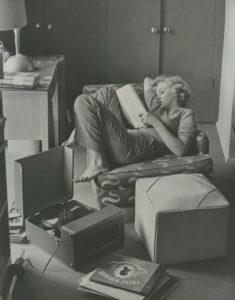




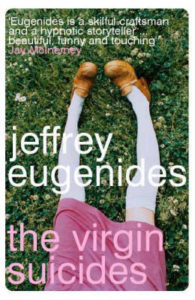


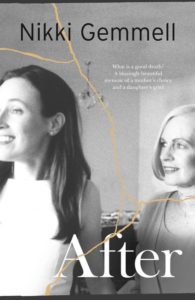



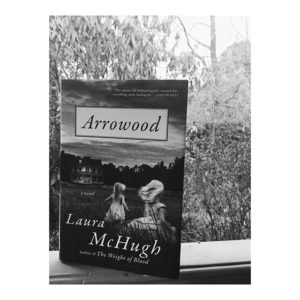
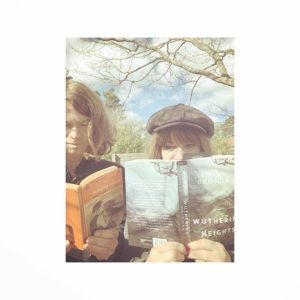
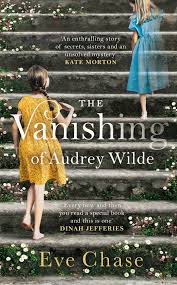
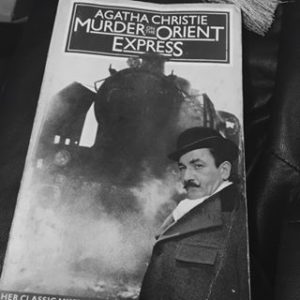



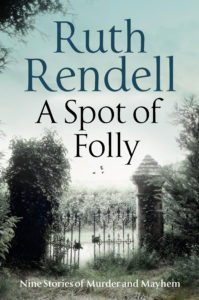


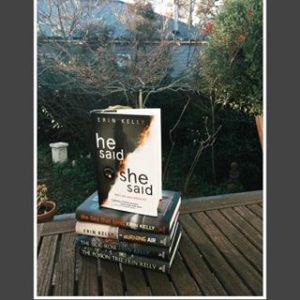





































Rossetti drawing of Lizzie Siddal

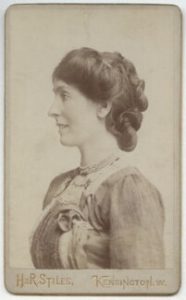


Jane Morris

Dante Gabriel Rossetti
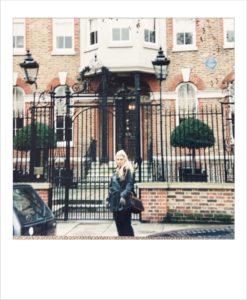
Outside 16 Cheyne Walk London where Rossetti lived from 1862

Rossetti’s dashing self portrait which hangs in my front room

My favourite Fanny Cornforth

Lizzie Siddal




photo of Kate Forsyth by Adam Yip

 I’m delighted to present my next author for my Ride the Rhino Inspiration posts – the beautiful Kate Forsyth.
I’m delighted to present my next author for my Ride the Rhino Inspiration posts – the beautiful Kate Forsyth.  I feel as if I’ve known Kate forever. We we were both briefly involved with The Drinklings many years ago, when we enjoyed wine and book chats in Sydney with a group of writers and we’ve spoken on a couple of panels together.
I feel as if I’ve known Kate forever. We we were both briefly involved with The Drinklings many years ago, when we enjoyed wine and book chats in Sydney with a group of writers and we’ve spoken on a couple of panels together.  She always inspires me with her intelligence, talent and her generous nature towards other authors. When I began this series of inspirational interviews I knew I had to have Kate aboard. When we last spoke at the Newtown Writers Tent for Better Read than Dead bookshop, we ended up in rain-soaked Newtown talking for hours in a cafe about writing, publishing, our children and the juggling act we have to go through. It’s a true testimony to how highly I regard her that when I suffered a major heartbreak with my publishing career, it was Kate I trusted, sending off a frantic email asking for her advice. In the very competitive world of publishing, Kate has always sought to encourage other authors to fulfil their dreams and destiny.
She always inspires me with her intelligence, talent and her generous nature towards other authors. When I began this series of inspirational interviews I knew I had to have Kate aboard. When we last spoke at the Newtown Writers Tent for Better Read than Dead bookshop, we ended up in rain-soaked Newtown talking for hours in a cafe about writing, publishing, our children and the juggling act we have to go through. It’s a true testimony to how highly I regard her that when I suffered a major heartbreak with my publishing career, it was Kate I trusted, sending off a frantic email asking for her advice. In the very competitive world of publishing, Kate has always sought to encourage other authors to fulfil their dreams and destiny.  Kate is an international bestselling author of 36 novels spanning a range of genres. She writes for both children and adults and has won many awards, including Five Aurealis Awards in a single year and a CYBIL award in the United States. Her bestselling novel Bitter Greens won the American Library Association Award for Best Historical Novel of 2015 and the library journal US Best Historical Novel. Kate has a doctorate in fairytale studies from the University of Technology in Sydney and a BA in literature and a MA in creative writing. Writing talent is obviously in her blood: she is a descendant of Charlotte Waring, the author of the first book for children published in Australia, “A Mother’s Offering to her Children” (1841).
Kate is an international bestselling author of 36 novels spanning a range of genres. She writes for both children and adults and has won many awards, including Five Aurealis Awards in a single year and a CYBIL award in the United States. Her bestselling novel Bitter Greens won the American Library Association Award for Best Historical Novel of 2015 and the library journal US Best Historical Novel. Kate has a doctorate in fairytale studies from the University of Technology in Sydney and a BA in literature and a MA in creative writing. Writing talent is obviously in her blood: she is a descendant of Charlotte Waring, the author of the first book for children published in Australia, “A Mother’s Offering to her Children” (1841).Kate updates her very inspiring website regularly with loads of generous writing tips and fascinating interviews, and also runs writing retreats in the Cotswolds through the Australian Writers’ Centre. I hope you find as much inspiration as I did from Kate’s Ride on the Rhino.
I originally read Dancing On Knives in its earlier incarnation as Full Fathom Five, published by Harper Collins Australia under Kate’s maiden name Kate Humphrey in 2003.
I loved it and so was curious to read the revamped Dancing on Knives, published 11 years later by Random House.  Sara, the lead character, suffers from panic attacks and hasn’t left her family home in five years. From the opening paragraph we learn Sara is afraid of many things. She reads the Tarot and has psychic gifts inherited from her Spanish Grandmother Consuelo – who bequeathed Sara her cards with the message that the Tarot will help her to see more clearly. Sara’s father, the tempestuous and self-centered Augusto Sanchez, a well-known artist, is discovered hanging upside down from a cliff in suspicious circumstances. On the night his body (half-alive, half-dead) is discovered, Sara draws three Tarot cards: the Emperor, the Tower and the Hanged Man. A clear signifier of Change, conflict and catastrophe. This is the set-up for a contemporary mystery set on the South Coast of New South Wales.
Sara, the lead character, suffers from panic attacks and hasn’t left her family home in five years. From the opening paragraph we learn Sara is afraid of many things. She reads the Tarot and has psychic gifts inherited from her Spanish Grandmother Consuelo – who bequeathed Sara her cards with the message that the Tarot will help her to see more clearly. Sara’s father, the tempestuous and self-centered Augusto Sanchez, a well-known artist, is discovered hanging upside down from a cliff in suspicious circumstances. On the night his body (half-alive, half-dead) is discovered, Sara draws three Tarot cards: the Emperor, the Tower and the Hanged Man. A clear signifier of Change, conflict and catastrophe. This is the set-up for a contemporary mystery set on the South Coast of New South Wales. 

 I loved the evocative descriptions of Sara’s readings: Gently she opened the box. A faint, evocative smell of cinnamon, saffron and bay leaves rose from within, a smell that conjured powerfully the ghost of Consuelo Sanchez. Sara inhaled, holding the sweet, dusty spiciness deep in her lungs as if it was incense, her fingers resting on the silk-wrapped cards within. After a long moment she let her breath escape in a sigh, took the pack of cards out and unwrapped it from its shroud of silk. She turned the first card over. Dancing On Knives is rich in poetic imagery. I enjoyed passages describing Sydney, and the Manly Aquarium, the giant sharks and stingrays which added a delicious otherworldly texture. And this passage below where studying one of her father’s paintings, Sara mourns her mother’s death: Memories crowded in on her. Flashes of her mother’s voice, a strand of red hair, smothering velvet, smoke against a blue sky. It seemed to Sara that memories sank to the depths of the sea and hardened there to strange shapes. What was once a coin became a worthless disc of rusted green. What was once an anchor became a corroded crucifix. Nothing stayed the same.
I loved the evocative descriptions of Sara’s readings: Gently she opened the box. A faint, evocative smell of cinnamon, saffron and bay leaves rose from within, a smell that conjured powerfully the ghost of Consuelo Sanchez. Sara inhaled, holding the sweet, dusty spiciness deep in her lungs as if it was incense, her fingers resting on the silk-wrapped cards within. After a long moment she let her breath escape in a sigh, took the pack of cards out and unwrapped it from its shroud of silk. She turned the first card over. Dancing On Knives is rich in poetic imagery. I enjoyed passages describing Sydney, and the Manly Aquarium, the giant sharks and stingrays which added a delicious otherworldly texture. And this passage below where studying one of her father’s paintings, Sara mourns her mother’s death: Memories crowded in on her. Flashes of her mother’s voice, a strand of red hair, smothering velvet, smoke against a blue sky. It seemed to Sara that memories sank to the depths of the sea and hardened there to strange shapes. What was once a coin became a worthless disc of rusted green. What was once an anchor became a corroded crucifix. Nothing stayed the same.  Kate has previously written a book of poetry and one reason I enjoyed Dancing On Knives was the poetic feel to the story. It does have a sense of gripping tides and dark shadows in the writing. I also delighted in magical elements such as the description of Consuelo’s recipe book, which brims with remedies, love spells, shampoo, beauty aids and herbal lore.
Kate has previously written a book of poetry and one reason I enjoyed Dancing On Knives was the poetic feel to the story. It does have a sense of gripping tides and dark shadows in the writing. I also delighted in magical elements such as the description of Consuelo’s recipe book, which brims with remedies, love spells, shampoo, beauty aids and herbal lore.  Consuelo still visits Sara after her death as a ghost, with tips such as advising her to make Thyme tea with honey for courage, or wear a sprig of Thyme in her hair.
Consuelo still visits Sara after her death as a ghost, with tips such as advising her to make Thyme tea with honey for courage, or wear a sprig of Thyme in her hair.  I loved the character of Consuelo and the rich relationship between her and Sara. I could envisage a whole book on Consuelo’s back story alone.
I loved the character of Consuelo and the rich relationship between her and Sara. I could envisage a whole book on Consuelo’s back story alone.  Augusto, with the face of a Spanish aristocrat, thin arrogant nose and cruel, sensuous mouth is an unlikeable character with his selfish treatment of his family. But you feel more sympathetic towards him when he has to mix with his conservative country in-laws, the Hallorans. Augusto loves to discuss God, Art and Death whereas the Halloans’s interests lie more in football and fishing. Augusto is intolerant of anybody who bores him and the Hallorans bore him intensely. Bridget, Sara’s mother, forces Augusto to move from Sydney to Narooma on the South Coast, where his in-laws live, to take up residence in the farmhouse left to Bridget by her father. The move proves disastrous. Augusto is a man who likes to not only paint women, but also to have sex with them first, believing the only way to know a woman is to bed her. When Augusto’s in a good mood he is passionate and King of Hearts, but he can swiftly transform when painting into the Demon-God. He mocks Sara’s attempts at art. His sons (the elder, Joe, and twins Dylan and Dominic) and Sara’s half-sister Teresa fear and despise him.
Augusto, with the face of a Spanish aristocrat, thin arrogant nose and cruel, sensuous mouth is an unlikeable character with his selfish treatment of his family. But you feel more sympathetic towards him when he has to mix with his conservative country in-laws, the Hallorans. Augusto loves to discuss God, Art and Death whereas the Halloans’s interests lie more in football and fishing. Augusto is intolerant of anybody who bores him and the Hallorans bore him intensely. Bridget, Sara’s mother, forces Augusto to move from Sydney to Narooma on the South Coast, where his in-laws live, to take up residence in the farmhouse left to Bridget by her father. The move proves disastrous. Augusto is a man who likes to not only paint women, but also to have sex with them first, believing the only way to know a woman is to bed her. When Augusto’s in a good mood he is passionate and King of Hearts, but he can swiftly transform when painting into the Demon-God. He mocks Sara’s attempts at art. His sons (the elder, Joe, and twins Dylan and Dominic) and Sara’s half-sister Teresa fear and despise him.  Sara’s panic attacks are also described when she is bullied at school. Throughout the novel we come to understand the source of Sara’s original trauma. A character deftly drawn, Sara craves order and predictability. She’s an avid bookworm – mainly romance novels that Augusto sneers at. She can read up to six in a day, ‘lighting one on the butt of the last until she feels sick and nauseated.’ She reminded me of other children with creative bohemian parents such as Arkie Whiteley. Her romantic reading serves as a kind of mind-opiate but then she discovers the world of literature via a found copy of DH Lawrence’s Women In Love. This book is a revelation to Sara of the power of words and storytelling to resonate in the human soul:
Sara’s panic attacks are also described when she is bullied at school. Throughout the novel we come to understand the source of Sara’s original trauma. A character deftly drawn, Sara craves order and predictability. She’s an avid bookworm – mainly romance novels that Augusto sneers at. She can read up to six in a day, ‘lighting one on the butt of the last until she feels sick and nauseated.’ She reminded me of other children with creative bohemian parents such as Arkie Whiteley. Her romantic reading serves as a kind of mind-opiate but then she discovers the world of literature via a found copy of DH Lawrence’s Women In Love. This book is a revelation to Sara of the power of words and storytelling to resonate in the human soul: 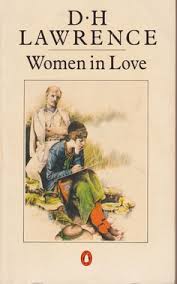 At once she had felt an oddness in the writing. It was quite unlike anything she had ever read before. It was not just that the two sisters in the book did not talk like anyone Sara knew, nor look like anyone with their white dresses and their brightly-hued stockings, grass-green, rose-red, cornflower-blue. It was not just that the words on the page waltzed round and round, pirouetting on points, turning and returning ever again to the same grace notes, building to a mordent melody that thrummed chords in Sara’s own shadow-bound soul, strumming music from keys that had long lain silent and still, coated in dust. In their hearts they were frightened. Enamoured of Women In Love, Sara comes to realise that she is not alone in her terror of the world – all the characters in Lawrence’s world are afraid. She wonders if Lawrence knew the pain she experiences of ‘the horror of other people, the world being too bright and sharp, as if every step brings pain. Like the character of the little mermaid who had her tongue cut out and had to dance on knives.’
At once she had felt an oddness in the writing. It was quite unlike anything she had ever read before. It was not just that the two sisters in the book did not talk like anyone Sara knew, nor look like anyone with their white dresses and their brightly-hued stockings, grass-green, rose-red, cornflower-blue. It was not just that the words on the page waltzed round and round, pirouetting on points, turning and returning ever again to the same grace notes, building to a mordent melody that thrummed chords in Sara’s own shadow-bound soul, strumming music from keys that had long lain silent and still, coated in dust. In their hearts they were frightened. Enamoured of Women In Love, Sara comes to realise that she is not alone in her terror of the world – all the characters in Lawrence’s world are afraid. She wonders if Lawrence knew the pain she experiences of ‘the horror of other people, the world being too bright and sharp, as if every step brings pain. Like the character of the little mermaid who had her tongue cut out and had to dance on knives.’ 
By the book’s climax we come to discover the truth behind Augusto’s fall over the cliff.
The Tarot card drawn at the novel’s end is The World.
 Dancing On Knives is a sad book in many ways, but also a hauntingly sensitive story of dysfunctional families, creativity, the shadow side of art and the longing we endure for self-actualisation and our soul’s true yearning. It is a book that will resonate with all who have experienced the pain of feeling frozen, and not being able to speak your own truth and feeling the outsider in a world that is too sharp and bright. A multi-layered, lyrical, gripping literary mystery from Kate Forsyth. I highly recommend it.
Dancing On Knives is a sad book in many ways, but also a hauntingly sensitive story of dysfunctional families, creativity, the shadow side of art and the longing we endure for self-actualisation and our soul’s true yearning. It is a book that will resonate with all who have experienced the pain of feeling frozen, and not being able to speak your own truth and feeling the outsider in a world that is too sharp and bright. A multi-layered, lyrical, gripping literary mystery from Kate Forsyth. I highly recommend it.
Kate Forsyth’s website can be found HERE
For an interesting interview Kate gave about Dancing on Knives see HERE
This review was part of my Australian Women Writers Challenge for 2014
Thank you for visiting me.
Love and Light,
Josephine
Poet’s Cottage has been attracting some lovely reviews this week. Thank you very much to Auckland Library for their review HERE. It was most interesting to see how the reader picked up the Enid Blyton influence in the book.
I should say, however, that Pearl Tatlow in Poet’s Cottage is NOT Enid Blyton in any way shape or form. I was always fascinated by how Enid Blyton’s two daughters, Gillian and Imogen, had totally opposing views of their mother. I knew one day I would write about this theme and it simmered away for years.
It interested me greatly because I knew of other families besides Enid’s – including my own – where children with identical upbringings have totally different accounts of events. It really made me contemplate truth, memory and history. How do we know what the bones are really singing?
Whether Enid Blyton was a good mother or not never affected how I feel about Blyton. I know she made my childhood magical and I still love curling up with a Famous Five or one of her boarding school stories. But I was fascinated by the family set-up where you have to try to uncover whether the bones are lying or being truthful – or both at the same time.
My writing friend, Jen Storer posted a lovely blog on Enid Blyton and Johnny Cash HERE.
And my other writing friend Kate Forsyth was in the Spectrum this weekend with a beautiful photo of her reading to her daughter HERE. I was thrilled to see Kate also loves to collect the vintage editions of Enid Blyton rather than the sanitised versions. I agree that writers should be read as products of their time and not have their words reshaped to fit the mindset of later generations.
The images of Enid Blyton in this post I found HERE. They are from an interview that Enid gave shortly before her death and I find them moving and poignant. They capture the fragility of the woman behind the words.
I’m so grateful for all the lovely reviews of Poet’s Cottage and that so many people have taken the time to discuss their thoughts on the characters and the set-up. It has been fascinating to see how the book has really delighted people from a range of backgrounds and ages.
Fellow Sydney writer Elisabeth Storrs posted a lovely and thoughtful piece on Poet’s Cottage HERE. I love the final paragraph because Pearl’s gramophone also haunted me for quite a long time.
Poet’s Cottage is an accomplished, engrossing novel with fine language and powerful descriptions of the small town inhabitants of Pencubbit in both past and modern times. Most of all, in creating the damaged and damaging Pearl, the author has created a character so compelling and complex that the image of her lingers just as surely as the strains of music from her gramophone drifted through Poet’s Cottage both before and after her death.
I shall post links to some other reviews as soon as I get a chance.
Life has been hectic here in the Little Brick with my daughter home on holidays. She is writing more than I am able to at the moment. I do love seeing her happy and creative and able to stay in her pyjamas all day if she wishes.
We went to see the movie Brave, which was a wonderful film showing the power plays between mother and daughters. I shamed myself by weeping over the final scenes and my daughter had nightmares that night over the bear – but still, a glorious couple of hours in the cinema. The writer based the character Merida on her own feisty-daughter and it’s easy to see why so many mother/daughters are enjoying this holiday movie. An added bonus for me was the whimsical and beautiful trailer before Brave, La Luna.
I really enjoyed this charming short film.
David and I saw The Mousetrap, which is now touring as part of its 60th Diamond Anniversary year. I had been looking forward to seeing for ages. It’s my third viewing of this iconic play (I originally saw it in The West End). Although nothing can compare to the romance of seeing Agatha Christie’s play in London, the Sydney cast did a really terrific job. I was pleased they kept it in a very traditional style and didn’t camp it up too much. Although a couple of times the accents were a bit forced, I still felt as if I was really at Monkswell Manor.
From the eerie opening of the play where the child’s rhyme, ‘Three Blind Mice’ is sung to the shock denouement at the end where a lot of the audience gasped at the twist – to the actor requesting we keep the secret (and of course we all will) – I thought the spirit of Agatha Christie’s play (which she did not expect to run for a few months) was honoured.
It’s proof of how people love a good cosy mystery and Agatha is top of her game in this sly and haunting play. You can read about the horrible true story HERE that inspired Agatha Christie to write her dark and elegant play. Terence O’Neill and his brother, Dennis in 1945 were fostered out to a pair on a farm in Shropshire, England. The brothers were beaten and abused by the foster parents and sadly, Dennis died. Agatha followed the case which made headlines in the UK and helped to change laws to protect children and used the case for a short radio play, Three Blind Mice (which later became The Mousetrap). Terence O’Neill has since written his own book of the events, Someone To Love Us.
Enjoy your week and stay creative. xx